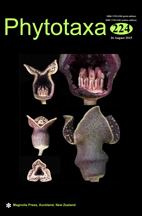Abstract
Cynoglossum is one of the most complex genera of Boraginaceae, with both species limits and the delimitation of the genus and its generic segregates highly problematic. Several hundred taxa and more than one thousand names are currently assigned to the genus and its segregates. The geographical centres of distribution are found in Asia and the Mediterranean. The present study investigates the genus Cynoglossum for Nepal, based mainly on herbarium collections from Nepal and across Asia, including most types, and some living accessions in Bonn Botanical Gardens. Based on this revision a total of five species of Cynoglossum are recognised for Nepal: Cynoglossum amabile, C. furcatum, C. lanceolatum, C. microglochin and C. wallichii. Cynoglossum microglochin, a large-fruited taxon, is here for the first time reported from Nepal and is the only species restricted to the Himalayas. All other species are widespread. The widely used name Cynoglossum zeylanicum is not available and the specimens so identified belong to C. furcatum, which is shown to extend to Georgia (Caucasus) in the West. Species described under Paracynoglossum and Cynoglossum, respectively, are found to be synonymous with each other, arguing for abandoning the problematic recognition of Paracynoglossum as a distinct genus. Diagnostic characters are described, micromorphological characters are illustrated and a key for identifying the five species is provided.

